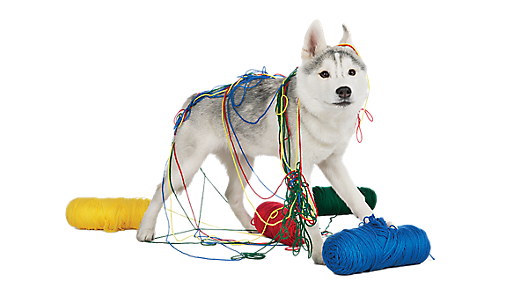
 top
top
CAT / training & behavior
How to Kitten-Proof Your Home
Overview
Learning how to kitten-proof your home is a lot like baby proofing. While a kitten might not bump their head on tables or try to stick their fingers in things they shouldn’t, they sure do know how to get into trouble around the house. Learning how to kitten-proof is an important step to take before bringing home a new pet. Cats are naturally curious creatures who love to explore their environment. Keeping your cat safe is your number one priority and proofing your house is a part of their safety.
So, what kinds of trouble might your kitten get into, and what steps should you take to kitty-proof your home?
Common Areas Cats Get Into Trouble At Home:
- Breaking Things - Cats often knock things off of counters. Whether it is on purpose or not, it can result in broken things. Kittens are less aware of their bodies than they are when they’re older. They might accidentally bump into things while they explore their environment or try to play with something that is breakable.
- Houseplants - Houseplants can sometimes smell really tasty to your feline friend. While some houseplants are safe for cats to nibble on, some can harm your kitty. Kittens might try to chew on houseplants that are harmful or poisonous to them.
- Climbing - Cats love to climb. Kittens will climb wherever they can to try and see new things and play. This could include your curtains and window screens or even your tablecloth.
- Cleaning Products - Leaving cleaning products out is dangerous when your kitten doesn’t know any better. They could try to chew on the nozzles of the bottles or knock them over. If they ingest those products, they could become ill.
- Cords - Cords look a lot like strings to kittens who don’t know any better. Your kitten might try to play with or chew on cords. If they chew too much or touch the wrong part of the cord, they could get hurt.
- Hiding Spots - You might be surprised with the spots your kitten finds to wiggle themselves into. One second you might know where your cat is; the next second, you might be searching your house up and down to figure out where they went.
- Escape Routes - Your curious kitten might try and run outside when you open the door, wriggle through an open window, or even scratch a hole in a window screen to get out.
How to Kitten-Proof Your Home
- Hide Things That Can Break - Collect breakable objects, such as vases and collectibles, and put them someplace your kitty can’t get to them. As your kitten starts to grow and learn, you might be able to introduce some of those objects back into their environment. To keep your kitten from playing with breakable things, make sure to give them plenty of cat toys like hunting toys, plush toys, teasers and tunnels.
- Learn What Houseplants are Safe for Cats - Take your time researching what plants in your home are safe for your kitty to eat or chew on. Any that are unsafe should be put somewhere your cat cannot get them, like behind a closed door or outside. When in doubt, stick to cat grass, cat grass or ask your vet.
- Remove Things That You Don’t Want Your Cat to Climb On - Remove tablecloths. Kittens love to try that trick where they whip off the tablecloth and the wine glasses stay in place, but they’re pretty bad at it. OK, kidding — but they may try to climb the tablecloth. If your cat likes to climb furniture, place cat furniture and cat bed alternatives all around. If your cat won’t leave your stuff alone, you can use cat repellents to keep them away from those items.
- Put Toxic Things Out of Reach - Make sure cleaning products, bleach, and other toxic chemicals are locked or latched away. Sometimes behind a cabinet is not good enough. If your cat knows how to open cabinets, then they could still get into those cleaners.
- Secure Cords - Use cord covers or other methods of hiding cords to keep them away from your kitten. Check for frayed electrical cords that could shock your kitty. Unplug any electrical appliances you’re not using.
- Memorize Hiding Spots - Before you bring your kitten home, search around to see where they might be able to hide. Secure those spots. Every time your kitten finds a new place to hide, secure it unless it is safe for them.
- Put Children’s Toys Away - If you have children in your home, watch out for small toys, hair ties, string, play darts and more. If your kitten gets a hold of these items, they can disrupt their digestive system and make them pretty sick. Prevent this ahead of time by picking up toys when they aren’t being used.
- Secure All Possible Escape Routes - Make sure your cat can’t slip out and escape from any open windows. And don’t leave high windows wide open; despite what you may have heard, cats can get badly hurt if they fall.
You love your cat, and there isn’t anything you wouldn’t do to keep them safe. Make sure to take all the right steps and buy the right cat supplies to kitten-proof your home so they can explore their new space safely.
Information in this article is not intended to diagnose, treat or cure your pet and is not a substitute for veterinary care provided by a licensed veterinarian. For any medical or health-related advice concerning the care and treatment of your pet, contact your veterinarian.


























